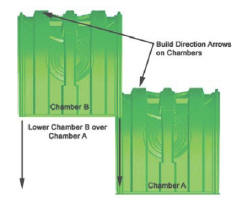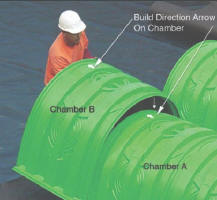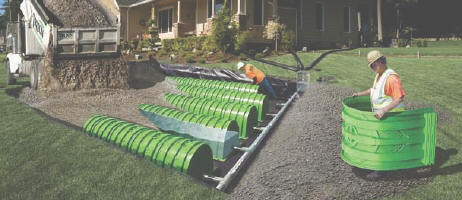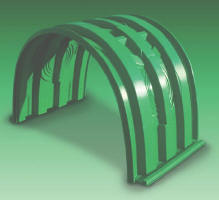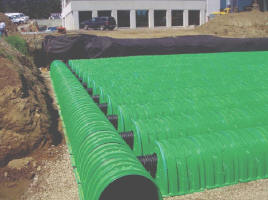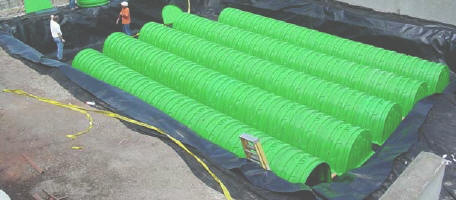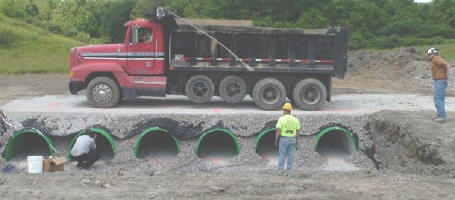|
Triton, the
Comprehensive, Low-Maintenance Underground Stormwater Solution
Stormwater management is one of the
greatest challenges facing site developers and municipal governments.
Properly containing sediments, contaminants and surface runoff is
essential to meeting environmental regulations and creating world-class
projects. Now, with Triton Stormwater Solutions, developers have the
tools they need to meet these demands with an easy to use underground
system that saves time and money.
The Triton system
combines eco-friendly materials with an ultra-durable yet lightweight
design that is easy to install and maintain. It also saves on space,
since the Triton chambers can be used in a two-tier, stacked
configuration in many applications. Triton: Header Row and Shoulders
Above the
Competition
Innovative design
is a hallmark of the Triton system, and nowhere is this more evident
than in our unique Main Header Row. Comprised of several Triton chambers
that sit on interconnecting sediment floor sections, the Main Header Row
helps the system adapt to a host of site requirements, while allowing
easy access for inspection and maintenance. It is an ideal means of
inexpensively enhancing Total Suspended Solids removal.
Simple to Install
Because the Triton
chambers are made of lightweight soy based resins, they are easy to
handle and set into place. The interlocking design allows for quick
connection of chambers to create the needed row lengths. The strength of
the chambers allows for quicker backfill rates and shallower depth
requirements than competitive products. In fact, the Triton chambers
compare more closely to traditional pipe products – but at a fraction of
the weight.
Simple to Maintain
The Triton system is
designed to simplify routine maintenance. Manholes in the sump basin and
on the Main Header Row itself give maintenance personnel simple access
points to inspect the system and maintain it if necessary. The need for
maintenance is reduced by the innovative distribution dynamics of the
Main Header Row.
Outlet feeder pipes
to the distribution rows are angled downward from the upper portion of
the Main Header Row chambers, ensuring that the bulk of sediment has
settled before stormwater is moved to the distribution rows, preventing
buildup in the distribution rows and preserving the infiltration rate.
On most projects, the
Main Header Row is designed to capture the “first flush” and offers the
versatility to be sized on a volume or flow rate basis to facilitate
this use. An upstream manhole not only provides access but typically
includes a high-flow outlet that controls excessive stormwater volume by
discharging overflow onto surrounding stone or through a manifold to
other Main Header Row chambers. |



